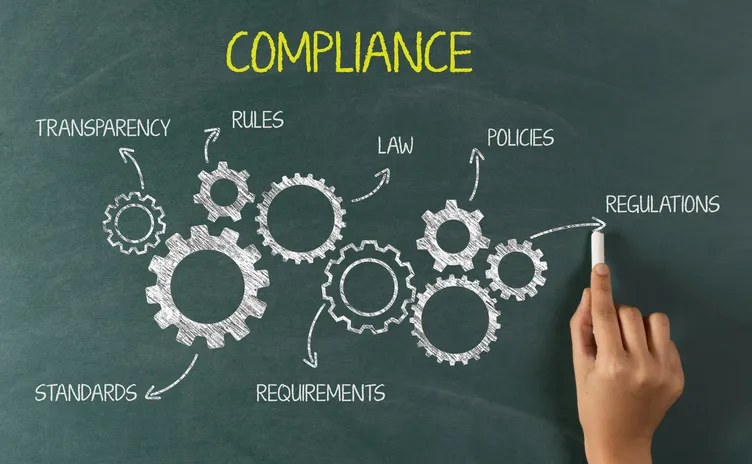Financial services are constantly evolving. As a result, advisors should be able to keep pace with the latest compliance requirements. Regulatory risk is a real concern, as changing regulations and laws can potentially increase operating costs and affect your ability to scale at a comfortable pace. Developing a strategy for managing regulatory risk can help you navigate these possibilities and keep your firm’s goals in sight.
Add new clients and AUM at your desired pace with SmartAsset’s Advisor Marketing Platform. Sign up for a free demo today.
Identifying Regulatory Risk Threats for Advisors
Combatting regulatory risk begins with understanding where the most significant threats come from. Analyzing compliance and risk trends through a regular risk assessment process can offer a better understanding of emerging regulatory issues and help determine how you can best mitigate risk and ensure your compliance. The United States Securities and Exchange Commission (“SEC”) Division of Examinations publishes their examination priorities on an annual basis. They reflect practices, products, and services that the Division believes present potentially heightened risks to investors or the integrity of the U.S. capital markets.
Cybersecurity
Cybersecurity is a focal point of the SEC’s 2025 Examination Priorities Advisors should be aware of how the SEC’s continued interest in cybersecurity and protecting client data may influence compliance requirements.
The SEC will focus on firms’ policies and procedures, governance practices, data loss prevention, access controls, account management, and responses to cyber incidents, including ransomware attacks. Additionally, the SEC will evaluate how registrants identify and mitigate risks to critical business operations.
Going forward, the SEC will continue to scrutinize registrant practices to prevent interruptions to mission critical services and to protect investor information, records, and assets.
Anti-Money Laundering
Anti-money laundering (AML) rules outline specific measures financial institutions must take to detect fraudulent or criminal financial transactions. In September 2024, the Financial Crimes Enforcement Network (FINCEN) published a final rule that imposes AML and countering the financing of terrorism (CFT) requirements on select RIAs and exempt reporting advisors.
Under the new rule, RIAs must:
- Establish a written AML/CFT Policy
- Submit Suspicious Activity Reports (SARs)
- Maintain records of financial transactions
- Ensure compliance with the Bank Secrecy Act (BSA)
- Appoint an AML/CFT compliance officer
- Develop and implement a continuous employee training program t
- Conduct independent assessments of AML/CFT programs
Affected advisors must ensure their firms comply with the rule change by January 1, 2026.
Marketing
Marketing is another critical area for advisors to consider when assessing regulatory risk threats. Rule 206(4)-1 under the Advisers Act (“Marketing Rule”) defines new compliance rules when promoting your business.
Under the rule, advisors must:
- Include clear and accurate disclosures when mentioning hypothetical performance in marketing materials.
- Use a fair and balanced approach when describing the risks or rewards of a particular investment.
- Refrain from using misleading statements or cherry-picking information.
- Include proper disclosures when using testimonials or endorsements in marketing materials.
- Maintain proper records to support any claims made in marketing communications or materials.
This regulatory risk area is one to watch, as the SEC is actively investigating and penalizing advisory firms that fail to comply with the marketing rule.

Client Acquisition Simplified: For RIAs
- Ideal for RIAs looking to scale.
- Validated referrals to help build your pipeline efficiently.
- Save time + optimize your close rate with high-touch, pre-built campaigns.

CFP®, CEO
Joe Anderson
Pure Financial Advisors
We have seen a remarkable return on investment and comparatively low client acquisition costs even as we’ve multiplied our spend over the years.
Pure Financial Advisors reports $1B in new AUM from SmartAsset investor referrals.
Insulating Your Firm Against Regulatory Risk

As innovative technologies and trends emerge that affect the advisory landscape, regulation is always subject to scrutiny. The following tips and strategies can help you develop a workable action plan for managing your firm’s risk profile.
Review and Stress Test Compliance Policies
If you haven’t reviewed or updated your firm’s compliance policies lately, consider that task a priority. Pay particular attention to your firm’s cybersecurity and marketing compliance policies to ensure that they reflect the latest SEC rule-making changes.
After reviewing, consider a stress test to see how well the policies your firm has implemented work. For example, you might run a simulated data breach exercise to test the strength of your firm’s cybersecurity systems.
This is also an opportunity to learn how your employees react to cyber threats, identify potential weak spots in the system and take corrective measures. Doing so helps ensure that if the real thing comes along, your firm is fully prepared.
Stay Attuned to the Regulatory Landscape
Leadership changes could impact the way the SEC fulfills its role and the regulatory risk areas it directs its attention to. That includes leadership changes within the agency itself as well as within the executive branch of the federal government.
Following the 2024 election, there’s been speculation that the appointment of a new SEC chair could result in a distinct agenda shift. Whether that means more or less regulation remains to be seen, but it’s certainly something for advisors to watch.
It’s also important to stay dialed in when new regulatory rules take effect. The SEC issues risk alerts to remind advisors and broker-dealers of their obligations under securities law.
Foster a Culture of Compliance
Compliance is not the task of a single advisor. Ideally, it’s something every member of your firm takes part in. Developing a solid culture of compliance is one of the most effective ways to counteract regulatory risk factors that could impact your firm’s operations.
A well-rounded culture of compliance includes:
- An established code of ethics
- Comprehensive employee training programs
- Clear communication
Everyone in your firm should be familiar with compliance requirements and how to report potential violations. That applies to both back-office and front-office operations. Clear and open communication helps keep everyone on the same page when new compliance policies are introduced.
Frequently Asked Questions (FAQs)
What Is Regulatory Risk?
The SEC is the primary rule-making body for registered investment advisors. Regulatory risk broadly refers to changes in rules or laws that can affect the way a business operates.
How Can Advisors Reduce Regulatory Risk?
Advisors can minimize their potential for negative consequences associated with regulatory risk by routinely reviewing compliance policies, monitoring emerging regulatory trends and staying up to date on the latest financial services news. There’s no way to eliminate risk, but a proactive approach can help you prepare, and thus lessen the negative impacts of regulatory changes.
How Can RegTech Help Manage Compliance Risks for Advisors?
Regulation technology (RegTech) tools, including software and digital platforms, can help advisors meet their compliance obligations in a time- and cost-efficient way. For example, a well-rounded RIA tech stack may include compliance software that assists with new client onboarding, client communications and record-keeping, and data management. SmartAsset AMP is an example of a tech tool that helps advisors expand their marketing reach under Rule 206(4)-1.
Bottom Line

Regulatory risk isn’t going to go away. So it makes sense to have a game plan for navigating it. Conducting an in-depth assessment of your firm’s operations can help you figure out where you need to focus your attention when improving your compliance strategy.
Tips for Growing Your Advisory Business
- Successful advisors recognize the importance of a digital footprint. Your website and social media profiles can help you draw in new clients while enhancing your brand reputation. If you’d like to increase your visibility without taking time away from your clients, you might consider partnering with an advisor marketing platform. SmartAsset AMP (Advisor Marketing Platform) is a holistic marketing service that financial advisors can use for client lead generation and nurturing. You can sign up for a free demo and explore how SmartAsset AMP could help you expand your practice’s marketing operation. Get started today.
- Keeping up with compliance requirements can be time-consuming if you’re serving as your firm’s chief compliance officer (CCO). If you’re spending more hours than you’d like on managing compliance, you might consider bringing in someone to handle the role on a full- or part-time basis. You may find that it’s worth the investment to have someone contribute to the responsibility of managing your firm’s compliance expectations.
Photo credit: ©iStock.com/cnythzl, ©iStock.com/NicoElNino, ©iStock.com/LumiNola
